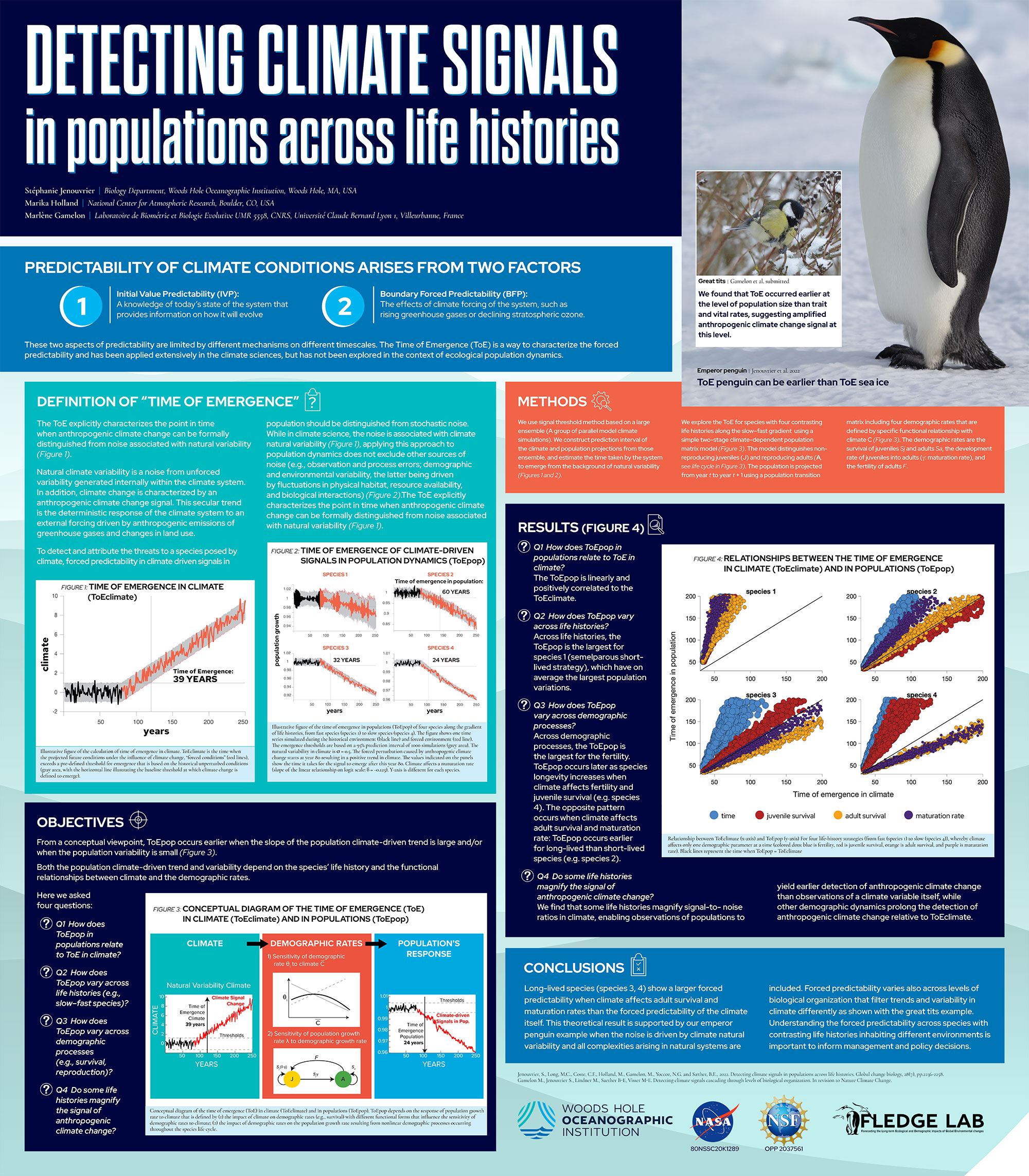Predictability
Can we predict the future of wildlife in a changing world?
Predicting the fate of animal populations is essential for conservation—but notoriously difficult. Short-term forecasts often struggle because nature is noisy: random events, limited data, and environmental variability can mask meaningful trends.
Two recent studies focused on penguins—species living in some of the world’s harshest and most rapidly changing environments—help shed light on the limits and possibilities of short-term ecological predictability.
Adélie Penguins: Predictability Isn’t the Same Everywhere
In the first study (Sen et al. 2023, Ecological Indicators) we used decades of satellite data to track Adélie penguin colonies across East Antarctica. We asked a simple question: How well can we predict year-to-year changes in penguin numbers, and can those predictions be transferred from one colony to another?
The answer: It depends.
- Some colonies followed relatively predictable patterns and responded clearly to changes in sea ice and ocean conditions.
- But others behaved unpredictably, even when the environment changed in similar ways.
- Models built for one colony often failed when applied elsewhere, showing that what works in one place might not work in another.
This tells us that local conditions matter, and simple climate-based models may not always be enough. Understanding the limits of predictability helps avoid overconfidence in our forecasts and pushes us toward better tools.
Emperor Penguins: Patterns in space can reveal the future
The second study focused on emperor penguins, using satellite imagery to measure how populations change at more than 50 colonies around Antarctica (Sen et al. 2025, JAE).
Here, we found something more encouraging: colonies in areas with lower sea ice had lower population growth rates—and this relationship held true both across space and through time.
This means that:
- A colony’s location today—its sea ice conditions—can help forecast its likely future.
- In this case, patterns across space mirror what happens over time, which supports the idea that we can use data from many places to make forward-looking predictions, even when long-term time series are missing.
Predicting wildlife population changes is challenging—sometimes because data are scarce, but often because nature itself is unpredictable. In Sen et al. (2024, Methods in Ecology and Evolution), we developed a new tool to detect how much randomness, or stochasticity, is present in population trends—even when we don’t know exactly what’s causing the changes.
We applied this method to both computer simulations and real-world animal populations, including seabirds, mammals, and insects. Some species showed highly predictable patterns—like those living in stable environments or with strong population regulation. Others, like certain seabird populations that depend on erratic food supplies or weather, behaved much more chaotically. Even within the same species, populations in different places varied in how predictable they were.
This work helps scientists understand where short-term forecasting is feasible and where uncertainty dominates. By identifying systems with low predictability, we can shift the focus toward building ecological resilience and adaptive management in the face of inevitable surprises.
But does that mean we can’t see the big picture?
Our research suggests otherwise (Joly et al. in preparation). Using simulations of different species with fast to slow life cycles, we explored how environmental pressures shape population dynamics over time. We found that even when short-term predictions are messy, long-term patterns often emerge clearly. This is especially true when environmental changes are strong and sustained, such as the ongoing shifts caused by human activity.
By identifying when these long-term trends become detectable—what scientists call the “time of emergence” (Jenouvrier et al. 2022 Global Change Biology)—we can better anticipate declines before it’s too late. This work lays the foundation for more reliable ecological forecasts, helping guide conservation decisions even when uncertainty is high.
- NSF: Collaborative Research: Integrating Antarctic Environmental and Biological Predictability to Obtain Optimal Forecasts
- NASA: Antarctic Marine Predators in a Dynamic Climate

![[2-24-25-REVISED-EPS]CRE05809_Graphical-abstract-for-Emperor-Penguin-MMLE-paper_STEPHANIE-JENOUVRIER poster](https://www2.whoi.edu/site/jenouvrier/wp-content/uploads/sites/118/2025/09/2-24-25-REVISED-EPSCRE05809_Graphical-abstract-for-Emperor-Penguin-MMLE-paper_STEPHANIE-JENOUVRIER.jpg)
